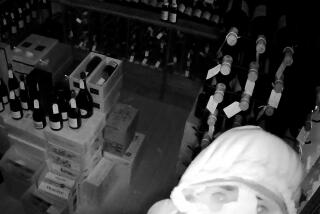In the Chips
- Share via
When the Glen Ellen Winery in 1983 began to make popular-priced Chardonnay, winemaker Bruce Rector knew he couldn’t afford to buy new French oak barrels for the wines.
Such barrels were so expensive (today they run $600 each and may be used to full effect only three times) that they would have pushed the cost of the wine to such a level that it would no longer be popularly priced.
But Rector and Bob Rogers, co-owner of a Sonoma company called Innerstave, had already begun doing research into how to get wood flavor into wine without the excessive cost of new barrels.
The idea was to take oak chips, toast them to get a certain char smell, and then add them to the wine. This must be done carefully, but when it is, wine made from mediocre grapes is improved.
*
A spokesman for Innerstave, which makes barrel inserts as its main business, says the money saved is significant. A new Innerstave, which would refresh an old barrel, costs about $103 installed. A pound of oak chips, which would flavor nearly two barrels of wine with oak aroma, costs $3.50.
“We’ve done extensive research into the various toast levels (of the chips) for different wines,” he says. “The flavor is a little different from what you get from a barrel, but it’s close.”
The spokesman said wineries use the chips in two ways, either floating them in the wine and stirring, or making a giant teabag out of cheesecloth and suspending the bag in the tank for 24 to 48 hours.
Once used, oak chips may be used on a barbecue or discarded.
Industry sources say the technique is widely used today in California by those who make low-priced wine, as well as by winemakers in Australia, Chile and Argentina. And at least two European firms, one in Germany and one in France, have bought charred oak chips for experiments.
More to Read
Eat your way across L.A.
Get our weekly Tasting Notes newsletter for reviews, news and more.
You may occasionally receive promotional content from the Los Angeles Times.









